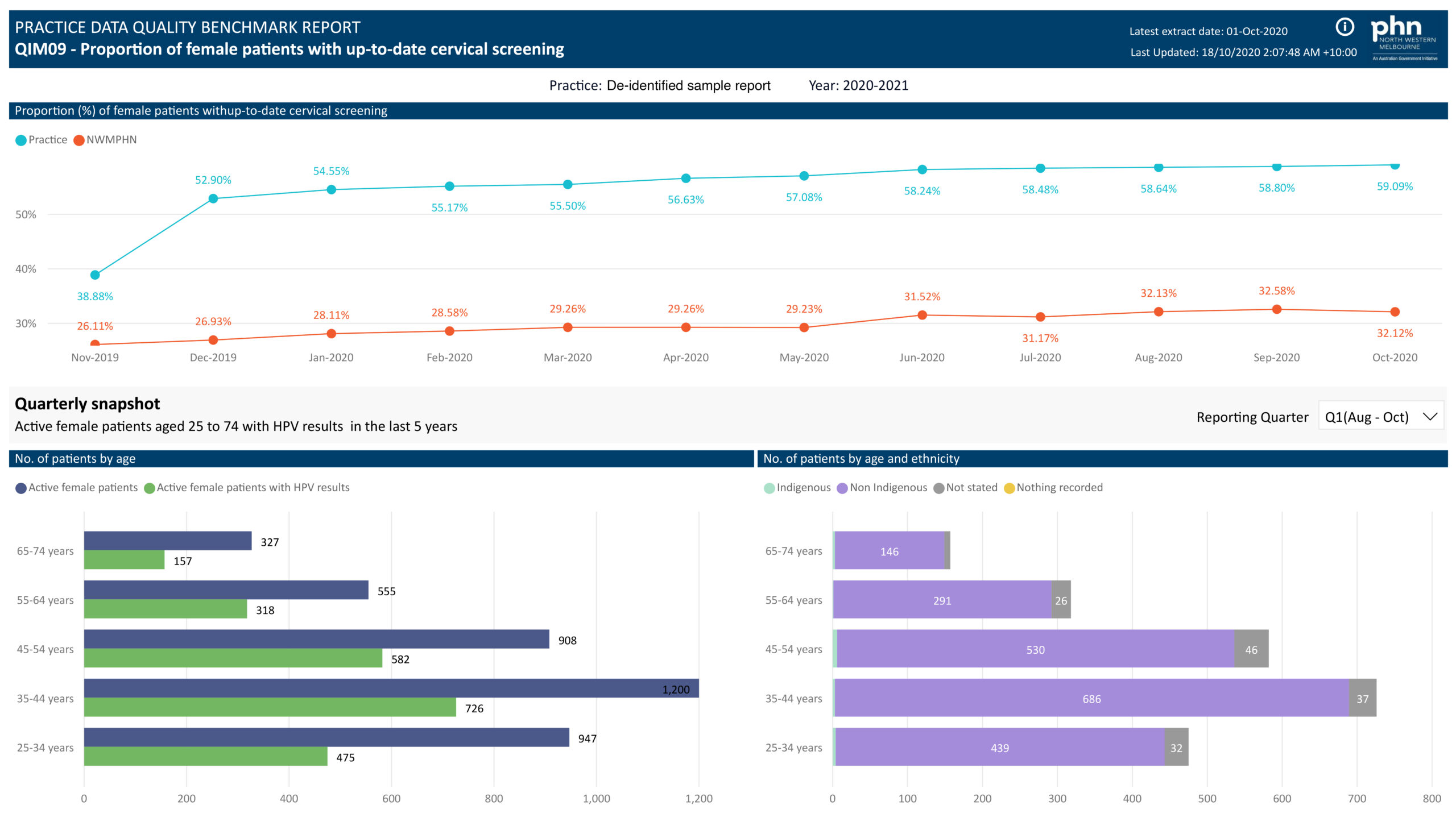
By Dr Jeannie Knapp, GP and Primary Health Care Improvement GP Adviser, North Western Melbourne Primary Health Network.
Recently we provided an overview of our new Practice Incentives Program Quality Improvement (PIP QI) reports for general practice. Eligible practices can receive the PIP QI Incentive payment by submitting the PIP Eligible Data Set to their local Primary Health Network and participating in quality improvement. Together, we are helping your practice to provide better care for patients through these regular PIP QI data reports.
This month we are taking a closer look at the cervical screening section of the report.
The Australian Institute of Health and Welfare (AIHW) recently published a report showing that cancer screening rates have been lower across the board during COVID-19. According to AIHW, cervical screening rates were expected to fall in 2020, due to changes from 2-yearly Pap tests to 5-yearly cervical screening tests. However, it is likely that there are many patients in your practice who were due a test that did not attend.
Cervical screening in our PIP QI report
The cervical screening section of the data report can be seen below (click to enlarge).

This section of the report shows the percentage of female patients with up to date cervical screening both in your practice and compared to the average across the North Western Melbourne Primary Health Network region (NWMPHN).
You can also see a breakdown of active female patients in each age group compared with those for whom you have recorded a HPV result. This data can tell you if there is a specific age group that you may need to target to attend for screening. You can also see the number of patients who are Aboriginal or Torres Strait Islander who have had cervical screening.
Improvement ideas: cervical screening
- Install Top Bar on all clinical computers – it will alert clinicians in real time to eligible patients not screened
- Make cervical screening the topic of a clinical meeting and brainstorm ideas to improve screening rates. Make sure all clinicians are up to date with current screening guidelines
- Use CAT4 to identify patients who are overdue for screening. The CAT4 report will identify those with no screening recorded or those overdue.
- Discuss at a clinical meeting how to work through this list:
- Try an SMS campaign – maybe choose to send a certain number each month
- Consider adding alerts to the clinical file, for example: “CST due”
- Consider a front desk pink slip campaign. For example: reception staff can give a pink slip to all women aged between 25-74. It could read: “X% of women are not up to date with their cervical screening. Are you one of them? Discuss this with your doctor today.”
- Include cervical screening in the 45-49-year-old health check
- Check if you can add an automatic recall in your clinical software for all female patients once they turn 25
Documenting your Quality Improvement activities
NWMPHN has published a Quality Improvement Booklet to help you work through improvements for PIP QI. You can find that resource along with templates to use for all QI activities on our website.
You can also record your improvement activities in your Practice Plan. Talk to your NWMPHN relationship manager about making an update to your Practice Plan.
More information
The reports will be emailed to you each quarter. Then, your relationship manager will make time to check in with you or your team about the reports and to see how we can best support you to make improvements in your practice. We will be providing a range of support options to help your practice to get the most out of these reports. Available support includes:
- Navigating PIP QI Reports sessions with Dr Jeannie Knapp (NWMPHN GP Adviser)
- General practice visits for the whole practice team
- Virtual drop-in sessions
- Phone or email support with your NWMPHN relationship manager
Please reach out to our team for help by emailing primarycare@nwmphn.org.au
Resources
- Watch a recording of the QI Reports webinar
- RACGP webinar: Cancer and COVID-19: delayed cancer diagnoses and the impact on primary care (21 October 2020)




